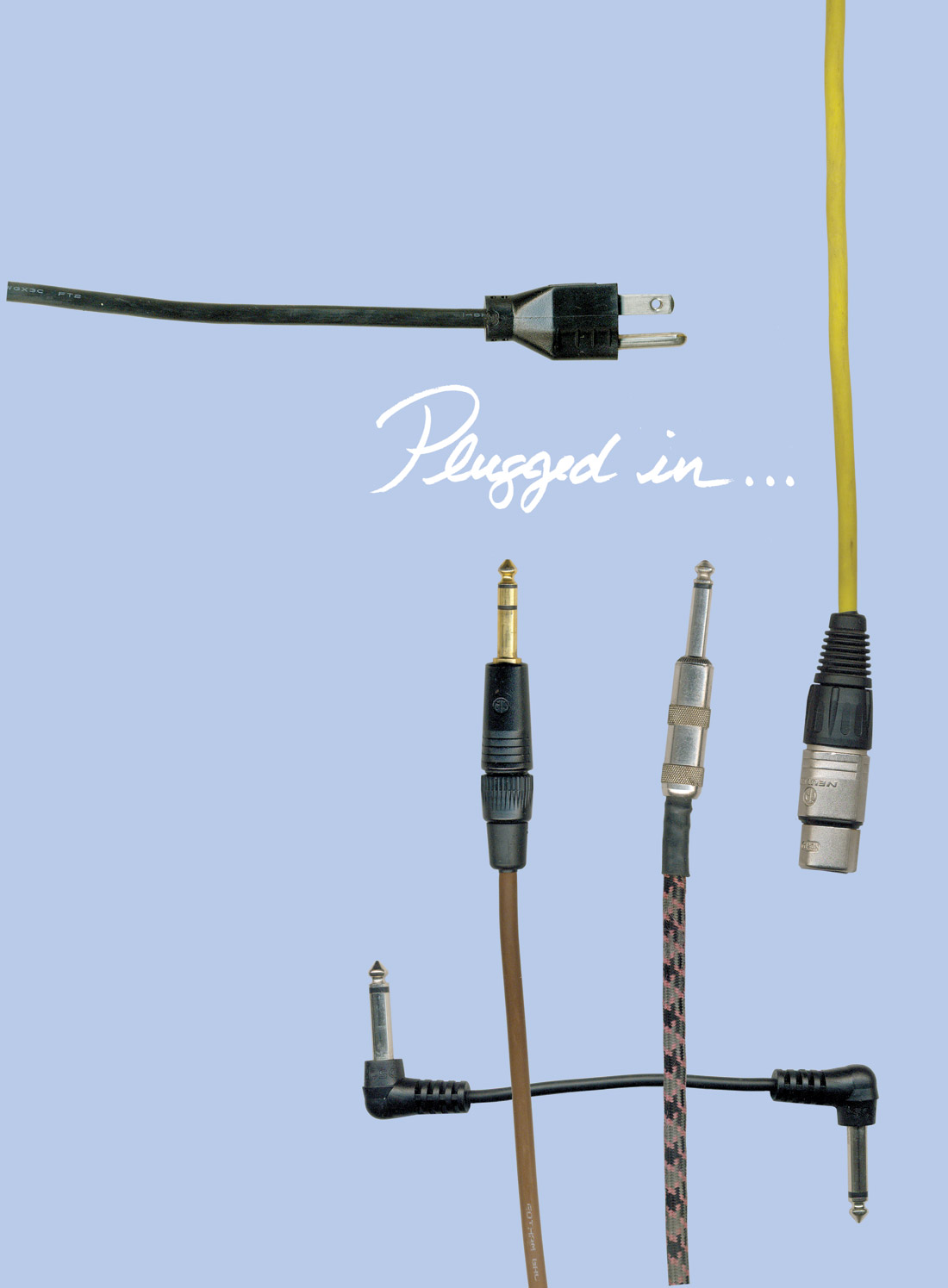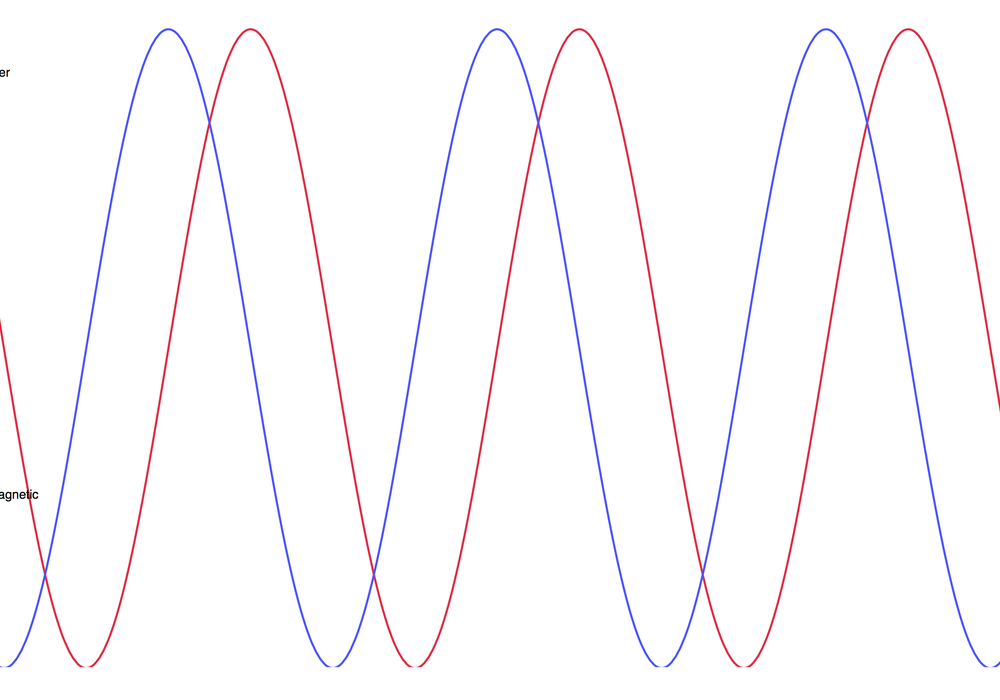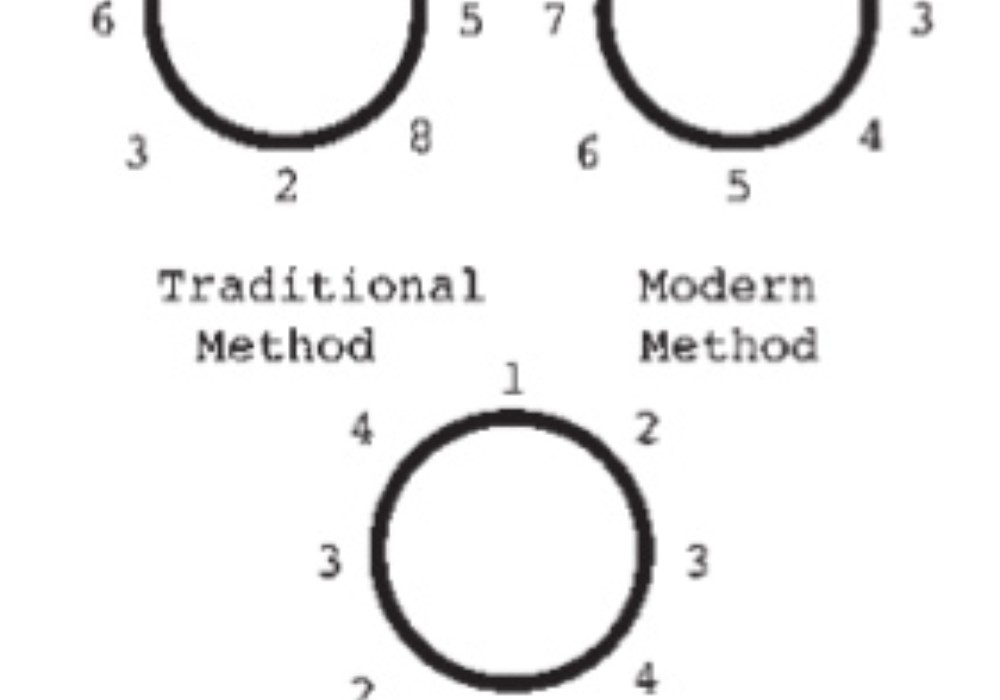Guitar amps are wonderful, mysterious things. Like any other amplifying or processing device, guitar amps impart varying degrees and types of coloration to the input signal, and can have character that informs artistic or aesthetic choices. The cooler ones beg to be used unconventionally to exploit their quirks and character — even on non-guitar sources. While there are many great names in guitar amp history, there's probably none more ubiquitous and intriguing than Fender — the company's colorful history is full of cool amps. Prior to 1980, three broad categories emerged that have distinct sonic and cosmetic identities: tweed, brown/blonde Tolex and black/silver panel. To learn more about the sounds these amps offer, let's break each era down into parts: preamp, power amp, speakers, power supply, cabinet construction, and finally, onboard tremolo and reverb effects.
Tweed
Tweed amps were produced for well over a decade, and evolved considerably over that time. Early tweeds have rounded "TV Front" grilles and primitive electronics. These evolved into a design with wide panels above and below a rectangular grille, and finally into the most common (and sought-after) version: the narrow panel amps.
Preamp: As a result of constant evolution, tweed preamps are a mixed bag. Some of these earliest amps have grid-leak biased preamp tubes, while later ones use the more typical cathode bias scheme. Grid-leak is a primitive bias method that doesn't tend to handle hot input signals very well — be careful when running boosted or line-level signals in some of the TV-front amps. Smaller tweed amps have simpler tone controls than the larger amps, and many have interactive volume controls. The narrow panel tweed Deluxe is one such amp — changing the volume control's position on an unused channel will affect the other channel, and the tone control behaves differently depending on the channel used and where the volumes are set. Experiment with this! There are a lot of tonal possibilities to be explored. Medium-to-large narrow panel amps (Pro, Bandmaster, Super, Bassman, etc.) make use of a cathode follower after the tone stack. As a result, the tone controls behave a bit like overdrive controls — when bass and treble are turned almost (but not fully) all the way up, the hot output from the cathode follower will overdrive the phase inverter and power tubes. Use this to your advantage! After 1960, Fender abandoned this topology. In tweed amps with multiple channels, all channels are "in-phase" with like electrical polarity. Consequently, in four-input tweed amps, a short cord can be used between inputs to "bridge" the channels, encouraging earlier distortion.
Power Amp: Three phase inverter designs show up in tweed amps. Some early tweeds have the primitive paraphase style. Later, Fender employed the cathodyne style in small-to-medium amps like the Deluxe, Pro, Bandmaster, and Super. Larger amps like the Bassman and the Twin use the long-tailed-pair inverter. Each style has its own sound — the long-tailed-pair has a smoother, more controlled overdrive than the cathodyne style, which can be wonderfully raw and loose when driven into distortion. Small-to-medium tweed amps (Champ, Princeton, Deluxe, some Harvards and some Tremoluxes) use cathode-biased, or "self-biasing" output stages, while the larger tweeds are fixed-biased. Cathode-biased output stages offer a spongier envelope and a bit of natural compression or "sag" to the notes that is often flattering. Fixed-bias amps, as a rule, offer a firmer feel with tighter bass and a robust attack. Most tweed amps have very high-quality interleaved triad output transformers that contribute to the amps' sonic signature. When shopping, avoid paying a lot for a tweed amp with non-original output iron. Finally, most tweed amps are designed with less negative feedback than their later counterparts. This contributes to the raw, touch-sensitive feel for which tweed amps are known.
Speakers: Once permanent-magnet speakers became available, all tweed amps came with AlNiCo-magnet speakers — commonly Jensen, but occasionally from other manufacturers. AlNiCo speakers offer their own natural compression. When the voice coil moves, it creates its own magnetic field that temporarily demagnetizes the AlNiCo a bit. This results in a soft-knee compression that is most noticeable at high volumes.
Power Supply: All tweed amps are tube-rectified, and tube rectifiers are yet another source of gentle compression and sag at high volumes. Inter-electrode resistance in the tube causes a drop in voltage in response to large current demands, creating the squish. As a rule, tube plate voltages in the tweed amps are lower than in their black/silver Panel counterparts. As a result, the tweed amps aren't usually as possessed of the prominent brightness and high headroom that characterizes later Fender amps.
Cabinet: Tweed cabinets are made of solid, finger-jointed pine. This light, resonant material vibrates a lot on its own, and its contribution to the tweed sound should not be underestimated. Additionally, the baffle on Tweed amps is typically very thin — no thicker than 3/8". Unlike later designs, the baffle is hung only from the top and bottom and floats free on the sides. As a result, at high volumes the baffle can vibrate freely in a manner similar to the diaphragm top on a guitar or violin — the larger the cabinet, the more pronounced the effect. This cabinet design creates a resonant, ambient effect at loud volumes that can compensate for the lack of onboard reverb. Get tweed amps off the floor and experiment with ambient or room mics to capitalize on this effect.
Onboard Effects: Bias-vary tremolo — a smooth sine tremolo created by modulating the bias on the power tubes — is included on the tweed Tremolux and Vibrolux. It's a wonderfully rich, warm effect.
Brown/Blonde Tolex
Beginning in roughly 1960, Fender introduced new cabinet cosmetics with forward-facing controls and either brown or blonde Tolex covering. These amps were different animals from their tweed predecessors in many ways.
Preamp: Using mostly 12AX7 tubes, the brown/blonde preamp utilizes a new tone stack located between the two triodes of the first preamp tube. Unlike the tweed amps, two channel brown/blonde amps typically have two complete preamps that combine at the phase inverter — their tweed brethren usually share one tone stack between both channels. The overall character of the new preamp is one of somewhat higher fidelity with a hint of the original Tweed flavor.
Power Amp: Except for the brown Princeton-Amp, which uses a cathodyne inverter, the amps from this era use the long-tailed pair. Virtually all brown and blonde Fender amps have fixed-bias output sections, lending them a more robust, aggressive character. Finally, a bit more negative feedback is often employed in the brown/blonde circuits. These amps sacrifice a bit of touch-sensitivity in favor of a more linear response and a more effective presence control.
Speakers: A mixture of AlNiCo and ceramic (Ferrite) speakers coexist during this era. Likewise, speakers by Oxford, Jensen, and Utah were all standard equipment at various times. Ceramic-magnet speakers do not compress like their AlNiCo counterparts, and are more aggressive sounding. Fender began offering JBL speakers in their Showman cabinets (and as an optional upgrade for other models) in the blonde era. A Fender amp with a JBL speaker is a unique sound — the JBL speakers have quite a bit more high-frequency extension than some of the other options. They're clean, loud, efficient, and bright. For clean guitar, jazz guitar, or pedal steel, a high-powered Fender amp with JBL speakers is a great option. For rock guitar, some perceive them as a touch bright or hard. With their fidelity and extended response, they are certainly less forgiving than some of the other options.
Power Supply: Many of the larger blonde amps utilize solid-state rectifiers, which offers a faster, more stable supply with less compression. Fender was still using transformers from many of the same suppliers as the tweed era.
Cabinet: Cabinets during the brown/blonde era are pine, but the baffles are hung from the sides. Consequently, the cabinets seem to resonate a bit less than their tweed counterparts. The larger blonde amps have a piggyback head-and-cab configuration. The cabinets are closed-back, and the "Tone Ring" Showman cabinet has a special type of port. Many love the sound of these cabinets.
Onboard Effects: Smaller amps such as the Deluxe and Princeton have bias-vary tremolo, while the larger brown/blonde amps employ a tremolo circuit unique to this era — the lushest of all Fender tremolo effects. Known in catalog literature as "Harmonic Vibrato," the effect uses low- and high-pass filters to split the signal into two parts before applying opposite-polarity tremolo to the bass and treble halves individually. When the two halves are summed, the resulting effect is swirly and complex — the illusion of actual pitch bending is created, and the sound is vaguely reminiscent of a Univibe-type effect. It's worth renting or borrowing one of these amps if a production calls for a prominent tremolo effect. There's nothing like it. Reverb also came into its own in this era — the brown Vibroverb was the first Fender amp to have onboard reverb, and the outboard reverb unit was introduced.
Black/Silver Panel
The black and silver panel amps represent a movement toward higher fidelity. Voiced with a more scooped timbre than their earlier counterparts, these still sound distinctly Fender. Black panel amps retain the craftsmanship of the earlier eras, while silver panel amps vary a bit more in terms of quality. These are by far the most plentiful of all vintage Fender amps.
Preamp: The black/silver amps introduce a high-loss tone stack that includes the capability for a midrange control. Some amps omitted the midrange control in favor of a fixed resistor, but the tone stack is the same. Black/silver amps with onboard reverb will have the two channels outputting opposite polarity, causing cancellation/interference if the channels are bridged — bridging channels on these is not recommended. Later silver panel amps have a master volume and pull-boost that is best reserved for intentionally ugly or unconventional distortion sounds.
Power Amp: All class A/B models except the Princeton and Princeton Reverb use a long-tailed-pair phase inverter. An all-new Champ was introduced that retains its single-ended cathode-biased scheme, while all other black/silver amps are fixed-bias (adjustable for the first time). Fender almost exclusively used Schumacher output transformers during the black/silver era. The presence control on most amps was eliminated in the black/silver era, and as much or more negative feedback is employed than ever before. Some of the later silver panel amps use an ultralinear output stage to reduce distortion and increase power — be advised that these cannot easily be converted to black panel specs.
Speakers: Almost all use ceramic magnets, except the Champ and JBL-equipped amps. Manufacturers vary widely and include Jensen, Oxford, Rola, Quam, CTS, Utah, JBL, and others.
Power Supply: Twin Reverb, Showman, and other large amps use solid-state rectifiers, while many others are tube-rectified. Throughout the silver panel years, plate voltages crept progressively higher, leading to increased high-frequency response and headroom.
Cabinet: Cabinets in the black/silver era are the least resonant. Construction is similar to the brown amps, but the baffles are thicker. Silver panel amps often have inferior cabinet construction and a separate baffle/grille frame, especially in later years.
Onboard Effects: Vibro-Champ, Princeton and Princeton Reverb all have bias-vary tremolo. Larger amps use a newer optical tremolo design with a colder sound and sharper envelope. It's the least sought-after tremolo effect of all Fender designs, but can still have its uses. Onboard reverb became standard on many models during the black/silver era.
In Conclusion
From the tweed era up through the black/silver panel years, Fender amps mostly progressed on the following continua: from most compression to least compression; from earliest distortion to most headroom; from warmest/darkest to most scooped/brightest; from lower power to higher power; and from less negative feedback to more negative feedback. Along the way, anomalous designs and features gave certain models in each era unique sonic identities. Who knew that a Tweed Deluxe — as a result of its cathode bias, tube rectifier, and AlNiCo Speaker — had a great little built-in multi-stage compressor?
Interviews | No. 106
The History of Ocean Way Studios & Beyond: Allen Sides' Endless Quest for Quality
by Larry Crane
Ocean Way Recording began in a garage in Santa Monica, California, in 1968, as a place to showcase owner Allen Side's custom monitors. From these humble beginnings the empire expanded to include...









